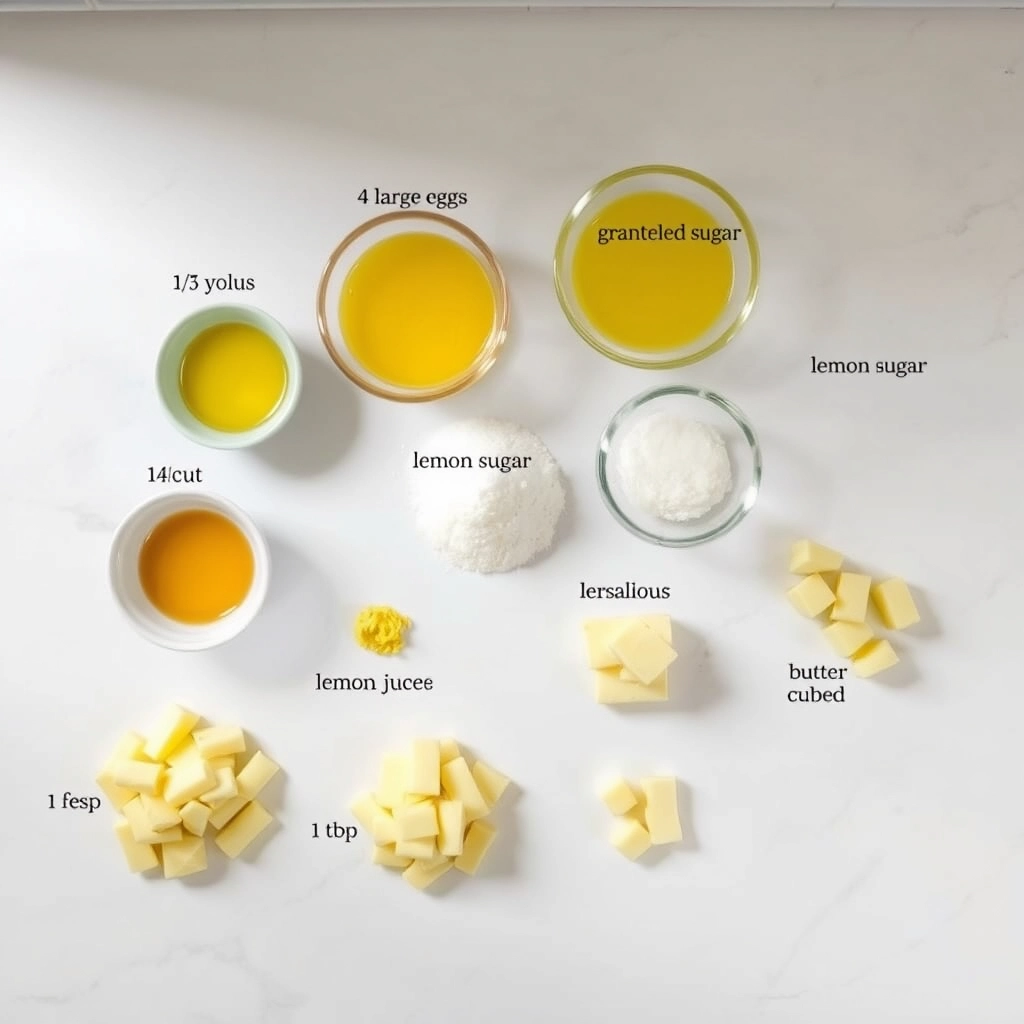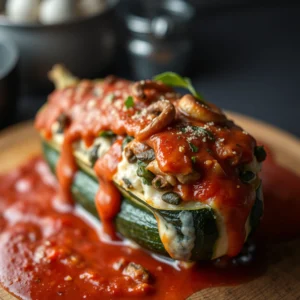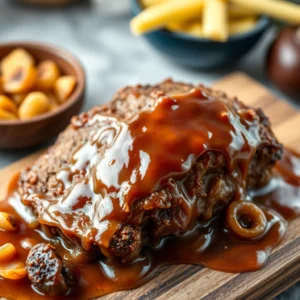There’s something magical about lemon curd—the way its bright, tangy sweetness can turn a simple scone or slice of toast into something extraordinary. I remember the first time I made it at home, standing over the stove, whisking patiently as the mixture thickened into that perfect, velvety consistency. The kitchen smelled like sunshine, and I knew I’d stumbled upon something special. If you’ve never tried making lemon curd before, let this be your sign to start. It’s easier than you think, and once you taste that homemade goodness, there’s no going back.
Ingredients You’ll Need
Gather these simple ingredients, and you’re already halfway to lemony bliss:
- 4 large lemons – Fresh is best here! You’ll need both the zest and juice for that vibrant citrus flavor.
- 1 cup granulated sugar – Just the right amount to balance the tartness.
- 4 large eggs – Room temperature eggs blend more smoothly into the mixture.
- ½ cup unsalted butter, cubed – Cold butter gives the curd its rich, silky texture.
- A pinch of salt – To enhance all the flavors.
That’s it! No fancy ingredients, just pantry staples that come together beautifully.
Step-by-Step Instructions
Let’s walk through the process—it’s simple, but a few key steps ensure perfection.
- Zest and juice the lemons. First, zest two of the lemons (about 2 tablespoons), then juice all four until you have ½ cup of fresh lemon juice. Pro tip: Roll the lemons on the counter before juicing to get the most liquid out!
- Whisk the eggs and sugar. In a medium saucepan, whisk together the eggs and sugar until smooth and slightly pale. This helps dissolve the sugar evenly.
- Add lemon zest and juice. Stir in the lemon zest and juice, along with that pinch of salt. The mixture will look thin—that’s okay! It thickens as it cooks.
- Cook over low heat. Place the saucepan over low heat and stir constantly with a wooden spoon or silicone spatula. This is where patience pays off. Keep stirring for about 8–10 minutes until the mixture coats the back of the spoon.
- Incorporate the butter. Remove the pan from heat and stir in the cold butter, one cube at a time, until fully melted and smooth.
- Strain (optional). For an ultra-smooth texture, strain the curd through a fine-mesh sieve to remove any bits of zest or cooked egg.
And there you have it—homemade lemon curd, ready to brighten your day!

Pro Tips, Variations, and Substitutions
Making lemon curd is simple, but a few tricks can take it from good to extraordinary. Here are some pro tips and fun variations to try:
- Use fresh lemons: Bottled lemon juice just doesn’t deliver the same bright, zesty flavor. Freshly squeezed is the way to go!
- Strain for smoothness: If you prefer a silky-smooth texture, strain the curd through a fine-mesh sieve after cooking to remove any tiny bits of cooked egg.
- Swap the citrus: Love lime or orange? Substitute the lemon juice with another citrus for a fun twist—just adjust the sugar to taste.
- Dairy-free option: Replace the butter with coconut oil for a rich, dairy-free alternative.
- Add a hint of vanilla or lavender: A splash of vanilla extract or a pinch of culinary lavender can add a lovely depth of flavor.
What to Serve with Lemon Curd
This vibrant, tangy curd is incredibly versatile. Here are some delicious ways to enjoy it:
- Spread it on warm scones, toast, or buttery biscuits.
- Layer it in parfaits with yogurt and fresh berries.
- Use it as a filling for tarts, cakes, or thumbprint cookies.
- Swirl it into whipped cream for a dreamy topping on pancakes or waffles.
- Drizzle it over vanilla ice cream for a quick, refreshing dessert.
Storage and Reheating Tips
Lemon curd keeps well if stored properly. Here’s how to make it last:
- Refrigerator: Store in an airtight container for up to 2 weeks.
- Freezer: Freeze in small portions for up to 3 months. Thaw overnight in the fridge before using.
- Reheating: If the curd thickens too much in the fridge, gently warm it in a saucepan over low heat or in short bursts in the microwave, stirring often.
Frequently Asked Questions
Can I use bottled lemon juice instead of fresh?
While bottled juice works in a pinch, fresh lemon juice delivers the best flavor. If you must use bottled, opt for one without preservatives.
Why did my curd turn lumpy?
Lumps usually form if the heat is too high or the eggs cook too quickly. Keep the heat low and whisk constantly for a smooth texture.
Can I make lemon curd without eggs?
Yes! Substitute the eggs with cornstarch (about 2 tablespoons) mixed with water for a thicker, egg-free version.
How do I know when the curd is done?
It should coat the back of a spoon, and if you run your finger through it, the line should hold its shape.
A Little Sunshine in Every Bite
There’s something magical about homemade lemon curd—it’s like capturing sunshine in a jar. Whether you’re spreading it on toast, dolloping it onto dessert, or sneaking a spoonful straight from the fridge, this bright and creamy treat never fails to bring a smile. I hope this recipe becomes a staple in your kitchen, bringing a little zest to your everyday moments. Happy cooking!
PrintEasy Lemon Curd
A smooth and tangy homemade lemon curd that’s perfect for spreading on toast, filling cakes, or topping desserts.
Ingredients
For the Crust:
- 4 large egg yolks
- 3/4 cup granulated sugar
- 1/2 cup fresh lemon juice
- 1 tbsp lemon zest
- 1/2 cup unsalted butter, cubed
Instructions
1. Prepare the Crust:
- In a medium saucepan, whisk together egg yolks and sugar until smooth.
- Add lemon juice and zest, then cook over low heat, stirring constantly, until mixture thickens (about 10 minutes).
- Remove from heat and stir in butter until fully melted and incorporated. Strain through a fine mesh sieve for extra smoothness.
Notes
You can customize the seasonings to taste.



